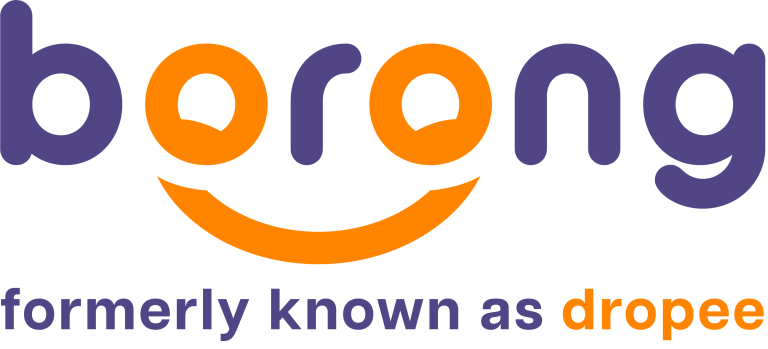Digitalisation For Small Businesses
If you run a small business, you’ve likely heard or seen the word ‘digitalisation’ often. That’s a common topic discussed at all levels, among business owners and even at the governmental level. But what does it actually mean for small businesses?
SME digitalisation refers to how businesses apply digital technologies (like computers and the internet) to their everyday business activities. These technologies can benefit businesses in all areas, from the Point of Sale (POS) to inventory, marketing, accounting and more. When done correctly, digitalisation can help a business become more resilient, efficient, and above all, more competitive.
As you read this article, you’ll learn the meaning of digitalisation for micro, small, and medium enterprises (MSMEs). But, more importantly, you’ll learn what digitalisation can look like for your business.
Let’s get started!

What Is Digitalisation?
Digitalisation is a word often used in discussions relating to micro, small, and medium enterprises (MSMEs). Without a doubt, it’s an essential issue for all businesses in this day and age. However, you must understand that the term goes far beyond being an exciting buzzword in the industry.
The term ‘digitalisation’ represents an overall implementation of digital technologies into a business’s daily activities. The technologies involved include computerised systems typically connected to the internet for sending and receiving information.
Nowadays, it’s easy to find countless examples of digitalisation solutions for small businesses. But unfortunately, that’s why some people might find the concept overwhelming and confusing.
Thankfully, it’s much easier to understand digitalisation by breaking it down according to different parts of your business, such as:
- Point of Sale (POS) and Payment: The first and most apparent examples of digitalisation in retail and other small businesses are at the Point of Sale (POS) and payment. Digitalisation involves using digital technologies to maintain sales and payment records. On top of that, digital payment solutions offer customers more ways to pay, like using digital wallets.
- Inventory: Digital solutions also exist in the area of inventory management. For instance, a digitalised business doesn’t need its staff to check inventory levels manually. Instead, their systems can track stock movement and automatically inform you when to restock.
- Marketing: Digitalisation also offers MSMEs tools to boost their marketing efforts to a wider audience. The use of social media is a perfect example of that, with businesses spreading awareness of their products through platforms like Facebook and Instagram.
- Accounting: Tracking payments and inventory using digital systems are also closely related to the business’s accounting concerns. Digitalisation in this area comes from accounting software that processes numbers quicker and more accurately than conventional bookkeeping methods.
- E-Commerce: Last but certainly not least, digitalisation also opens up the door for MSMEs to buy and sell online through the internet, better known as e-commerce. With platforms like Dropee, you can easily do business with many more people directly, whether they’re in your local area or much farther away.
As you can see, digitalisation covers every major area of a business regardless of what it buys, sells, or makes. So, whether you run a micro-enterprise or a large international company, digitalisation offers plenty of value.
How Does Digitalisation Benefit A Business?
Earlier, you read that digitalisation in retail and other small businesses covers many different areas and offers plenty of value. But what are the specific benefits that digitalisation can bring to your business?
In terms of the big picture, digitalisation makes your business more sustainable, resilient, and competitive. That means the business can perform well even when times are tough, or there is strong market competition.
All of that is achievable through digitalisation thanks to the benefits it brings, such as:
1. Efficient Processes
Overall, digitalisation makes your business processes more efficient than ever before. More specifically, that means digital solutions help your business function quicker and with fewer problems or mistakes along the way.
That benefit applies to processes like sales, payments, inventory management, customer service, and more.
2. Empowered Employees
One way digitalisation makes your business processes more efficient is by empowering your employees to improve.
Your business likely already has the most hardworking and intelligent staff out there. When you provide them with the right digital tools, you enhance their ability and enable them to use their talents even more.
Your business thrives even more as a result!
3. Improved Customer Engagement
As a business owner, you know the importance of engaging your customers at all stages of their journey. Still, time and distance can make that engagement more challenging and less effective.
Digital solutions help to close that gap so you can engage your customers more effectively. Whether you’re answering their questions or helping them fix a problem, digital solutions bring you closer to your customer, even if they’re in different parts of the country or the world.
4. Better Products And Services
With better processes, employee empowerment, and customer engagement, business owners like you also get many opportunities to improve the products and services you sell. That’s because digitalisation provides many ways to gather helpful feedback from people inside and outside your organisation.
That feedback will help you identify where your business might be lacking and can improve significantly.
Acting on that information will make your business more competitive, helping it to stand out above the others in your sector.
How To Get Started With Digitalisation
Now that you understand what business digitalisation is and how it could help your business, it’s time to learn how to get started.
The most important thing to understand is that digitalisation doesn’t happen overnight. So, be patient and take things one step at a time.
Here’s the big picture of how your business can embrace digitalisation:
Step 1: Understand Your Priorities and Goals
First and foremost, you must understand what your priorities and goals are. Your business is as unique and individual as you are. Because of that, what works for another business might give you different results.
So, take some time to understand what your digitalisation priorities are. That way, you can match it with the most suitable digital solution.
For example, if your goal is to sell more products to customers far and wide, that means your priority is e-commerce. You can pursue that goal using a platform like Dropee, designed for that reason.
Step 2: Develop A Plan
Next, develop a digitalisation plan. This is the part where you do your homework to understand more about the digital tools you want to use and issues like:
- How much it’ll cost
- How long it’ll take to implement
- Other solutions that can deliver the same benefits
- The benefits vs the costs, and whether or not they’re worth it for your business
It’s essential to take your time at this step to avoid investing in a digital solution that isn’t suitable for your business.
Step 3: Find The Right People
Lastly, you’ll need to find the right people to lead your business’ digitalisation efforts. For example, you might have an enthusiastic staff member in-house who is willing to learn and guide your team through the digitisation process.
Think of this step as finding the digitalisation champion within your business!
Final Thoughts
Overall, what you’ve read above is that digitalisation refers to using digital technologies to improve your business. Digitalisation can fit into different areas within your small business, like inventory, e-commerce, and point of sales (POS), just to name a few.
Digitalisation offers plenty of benefits that make your business more resilient and efficient. So, to begin digitising your business, start by understanding your goals, developing a plan, and finding the right people to champion it for your business.

